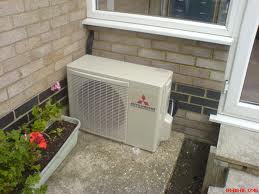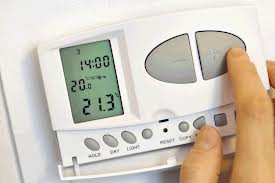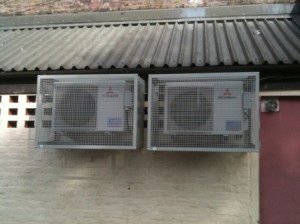When it comes to controlling airflow, temperature and quality across multiple rooms or areas inside a building, multi-split air conditioning units have become increasingly popular. Whether you’re after a domestic unit or a commercial air con unit for use in an office, hotel, restaurant, retail space or anywhere else, multi-split systems can offer you a wealth of benefits that portable air conditioning units simply cannot.
Understanding how these systems work can help you make an informed choice for your heating and cooling needs. At Climachill, we provide expert air conditioning products, installations, repairs and maintenance services across Sussex and the South East of the UK, ensuring that every customer gets the best air conditioning unit and system to suit their needs. We’re here to explain the advantages of multi-split air conditioning and why it might be worth your time and consideration.
What Are Multi-Split Air Conditioning Systems?
Multi-split air conditioning systems involve a single outdoor unit being connected to multiple indoor units installed in different locations. Unlike traditional single-split systems that pair one indoor unit with one outdoor unit, multi-split systems can connect more than two indoor units to a single outdoor condenser unit.
This design makes multi-split systems effective for office air conditioning applications, as well as hospitals, retail units, and others where different zones or areas require varied temperature control at different times of the day.
The outdoor condenser unit acts as the central hub that distributes cooling or heating capacity to each connected indoor unit, which can be controlled individually. Therefore, setting the indoor temperature and fan speed for one room doesn’t affect every other internal unit.
How Multi-Split Systems Operate
Multi-split air conditioning systems follow specific engineering principles that maximise efficiency and comfort.
The outdoor unit hosts:
- The compressor
- Condenser coil
- Expansion valves
These circulate refrigerants through insulated copper pipework to each indoor unit. When you want it cooler indoors, the outdoor unit compresses the refrigerant before sending it through the pipes to each unit.
Each indoor unit contains:
- An evaporator coil
- A fan
These components absorb heat from the room air and return the warmed refrigerant to the outdoor unit.
When you want it warmer indoors, the process is reversed. The system extracts heat from the outside air and distributes it indoors.
Thanks to advanced inverter technology, the outdoor unit can modulate its output based on the combined demand from all indoor units, ensuring ideal energy efficiency and comfort in each room.
Key Components and Technology
Multi-split air conditioning systems incorporate several sophisticated components that work in harmony to deliver reliable climate control, including (but not limited to):
- Adjustable compressors
- Thermostats
- Remote controls
- Advanced filters
- R32 refrigerant solutions
- Insulated copper pipes
Collectively, when optimised, these systems can be individually and remotely controlled, remove dust, allergens and harmful particles from the air and keep indoor temperatures comfortable, all while reducing energy emissions.
Benefits for Commercial and Office Air Conditioning Applications
Multi-split systems offer several benefits for commercial applications, particularly in office environments where flexibility and efficiency matter greatly.
- Businesses can control the energy efficiency of their whole system by turning off units in unused areas.
- They can control individual rooms or zones for optimal comfort.
- The space requirements are minimal when you consider the versatility and breadth of commercial premises.
- Many multi-split systems are quiet and non-disruptive.
- They can be installed easily and with minimal disruption to an average working day, with outdoor units able to be easily concealed.
- Energy efficiency ratings of A+ are more achievable with modern multi-split systems, lowering everyday running costs.
Further Maintenance and Installation Considerations
Professional air conditioning installations are vital for multi-split systems, and it’s not recommended to attempt one yourself. An accredited expert air conditioning technician will ensure pipe runs are unobstructed, electrical connections are stable, and drainage can continue unencumbered, so multiple indoor units can run without issue.
At Climachill, our experienced air conditioning engineers assess each property’s specific requirements, recommending the ideal configuration of indoor units and outdoor unit capacity to match your space and budget. We ensure all installations comply with current regulations and manufacturer specifications, providing reliable operation for years to come.
We highly recommend taking out a regular air conditioning maintenance package to ensure your system remains efficient all year round, and so that costly breakdowns don’t break the bank.
Our comprehensive maintenance services include filter cleaning, refrigerant level checks, and component inspections across all indoor and outdoor units, ensuring you’re left with a reliable system that serves you well for years to come.
At Climachill, we provide best-in-class air conditioning installations, servicing, and maintenance across Sussex and the South East. Book a consultation with our team today to find out how much a multi-split system would cost you and, more importantly, how much it could save you in the long run.



